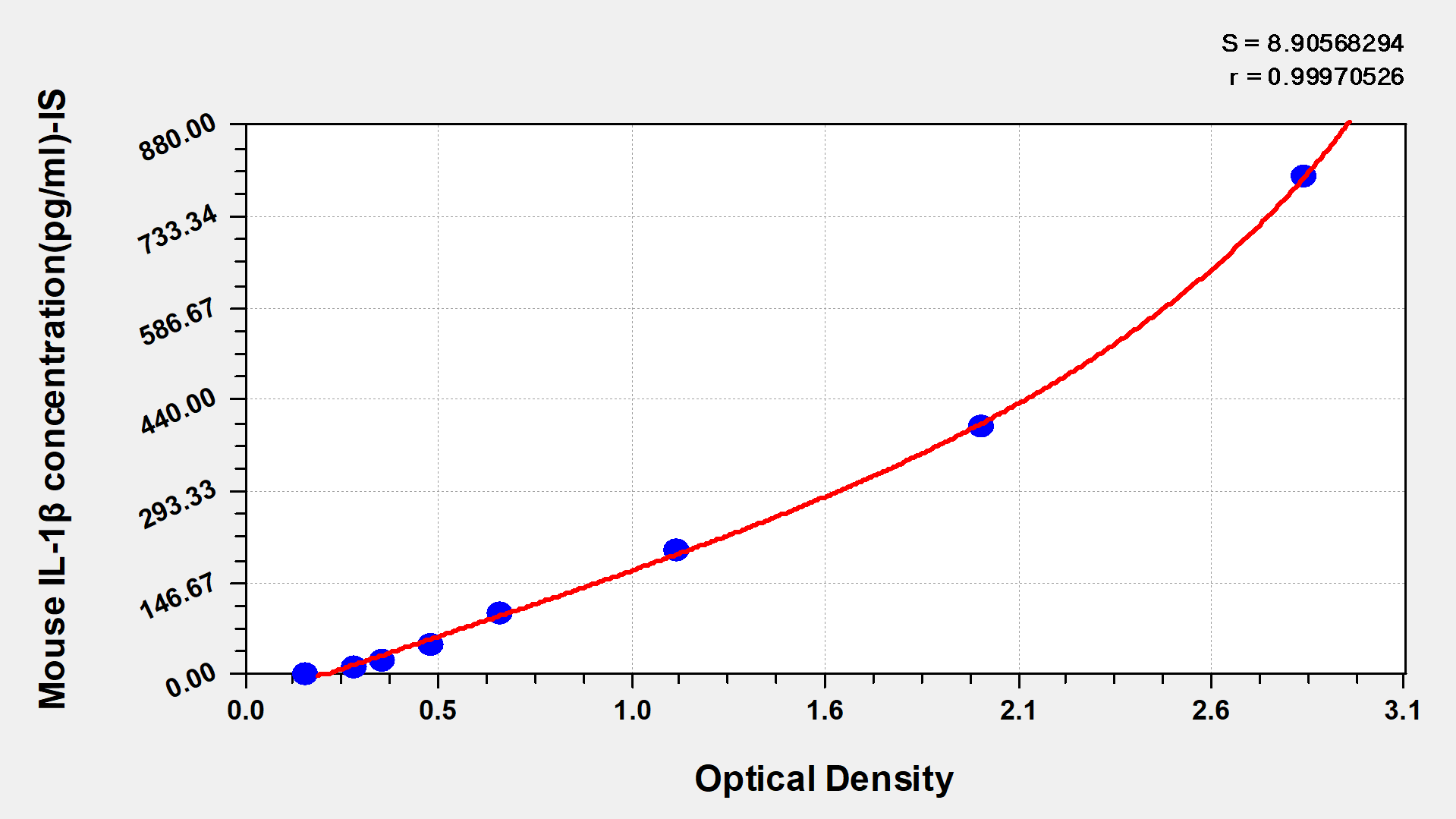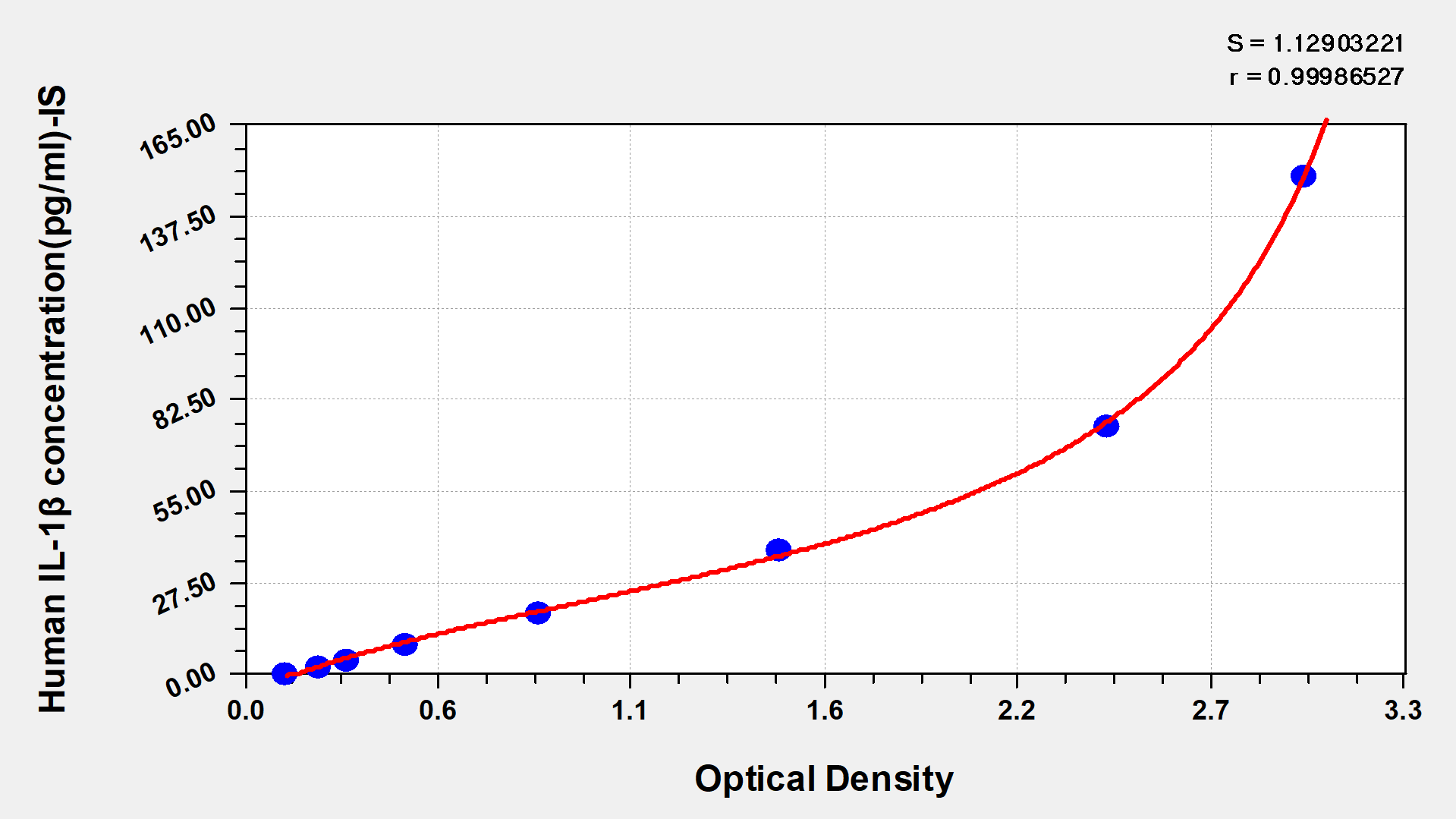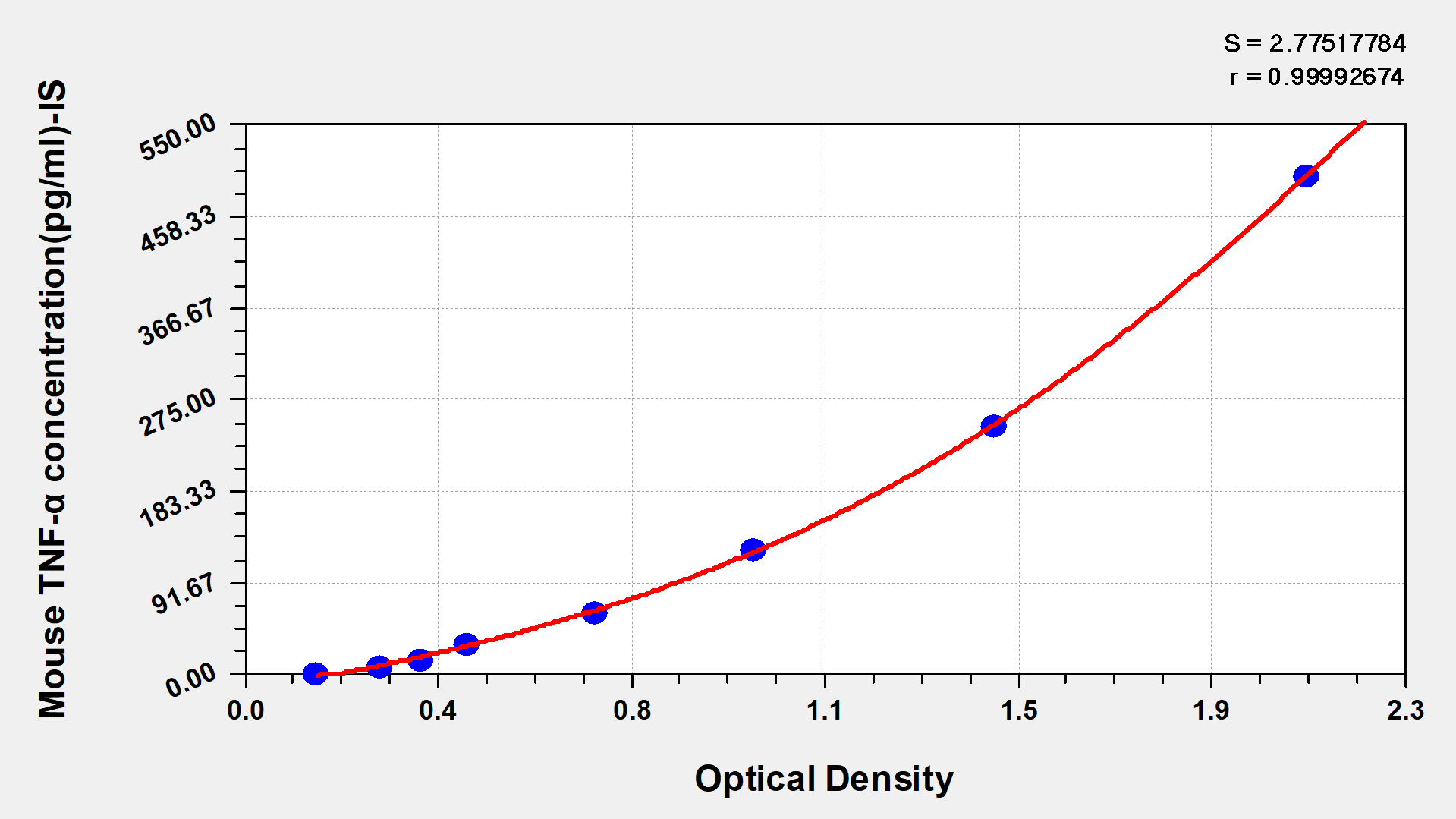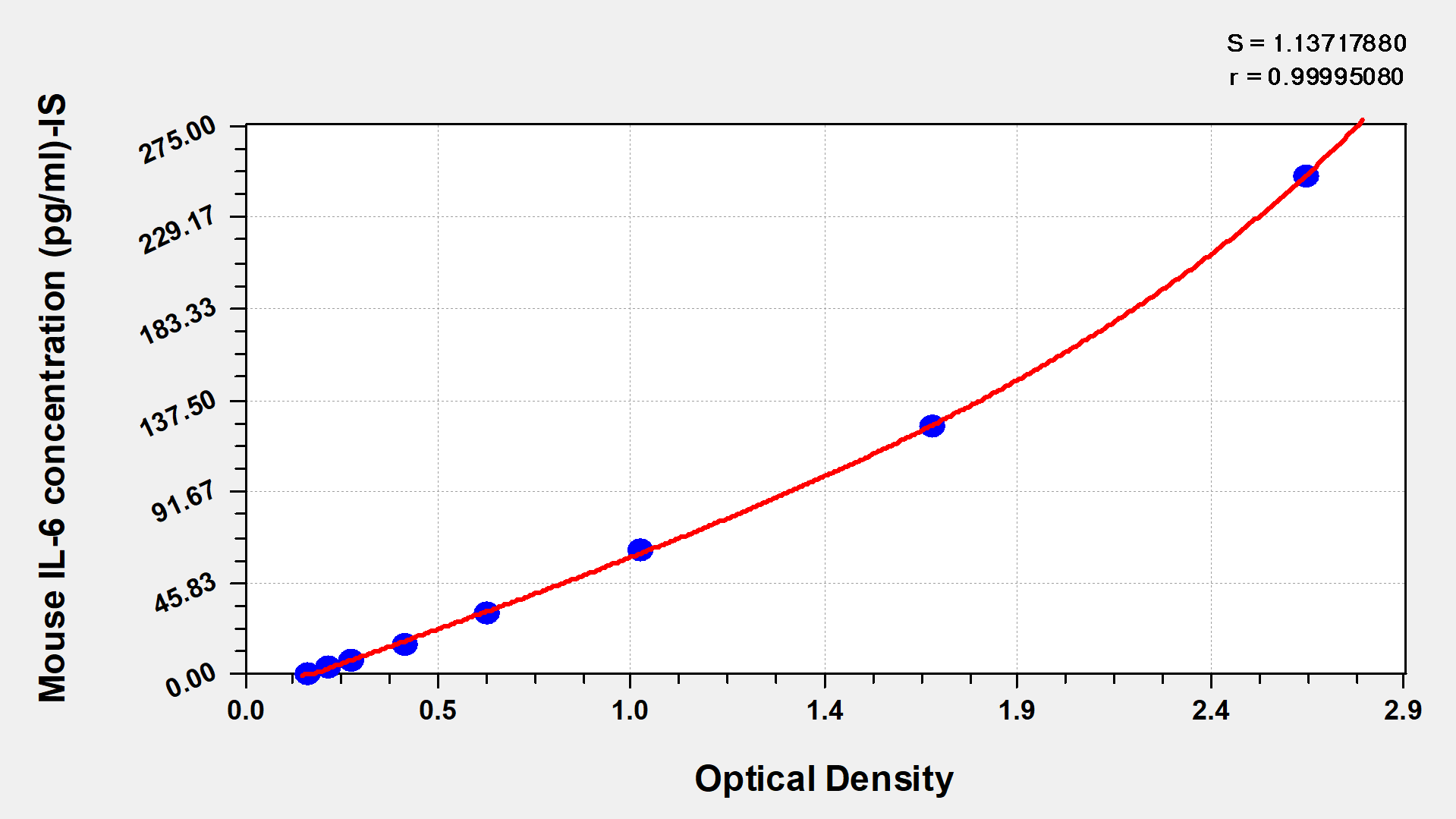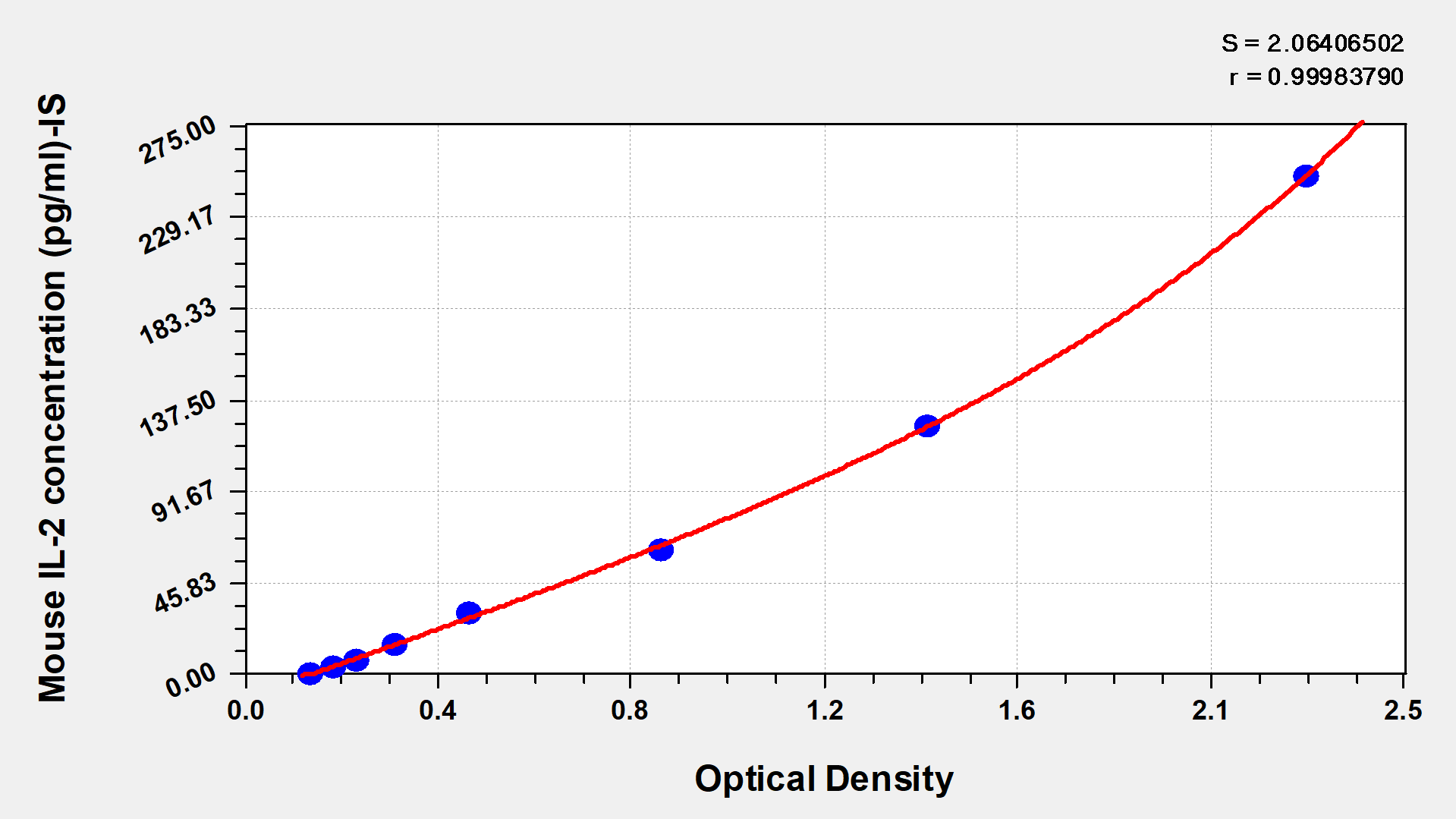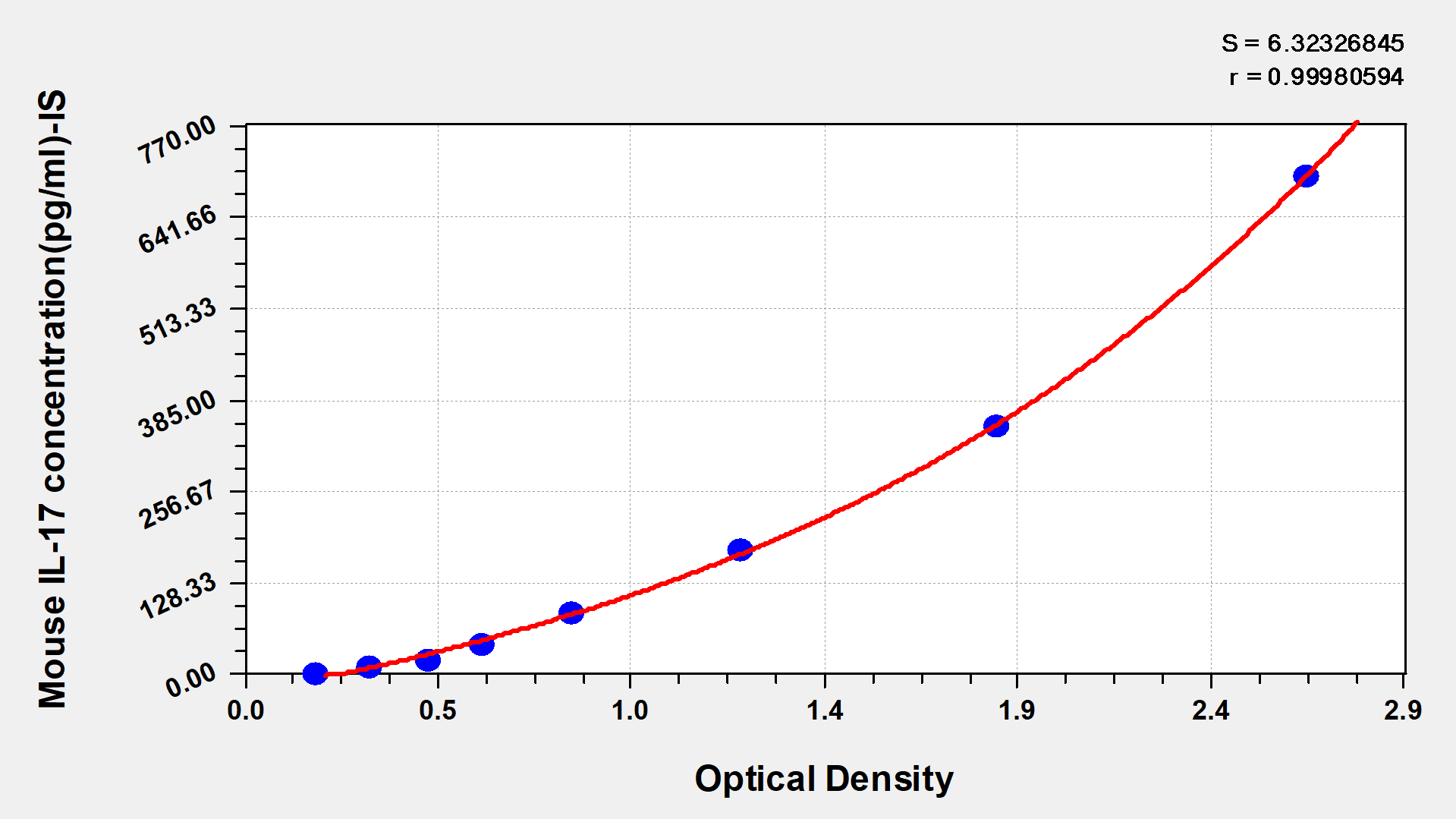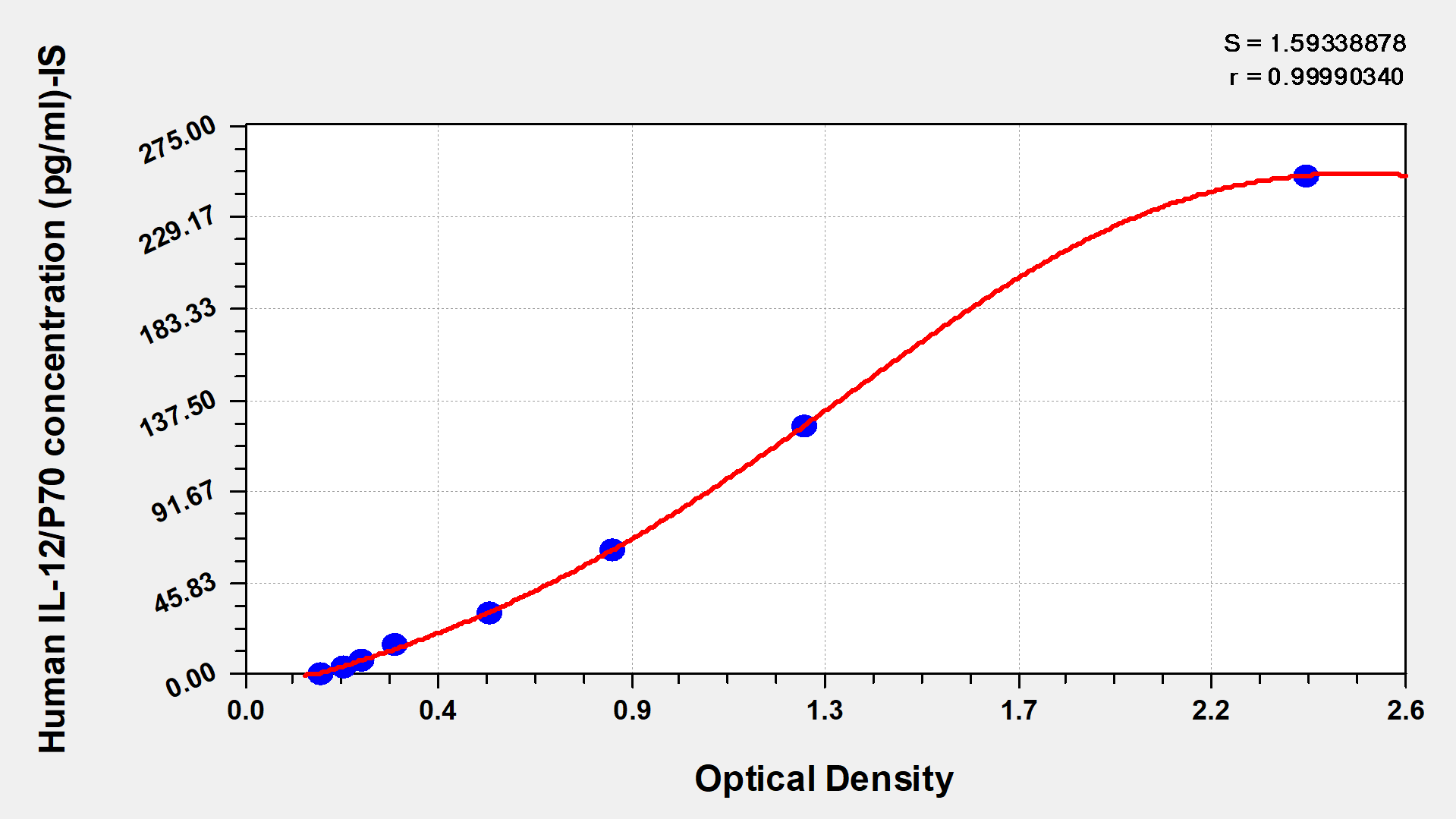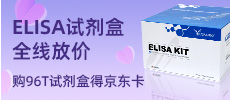Mouse Tumor necrosis factor ligand superfamily member 9(TNFSF9) ELISA kit
-
中文名称:小鼠肿瘤坏死因子配体超家族成员9(TNFSF9)酶联免疫试剂盒
-
货号:CSB-EL023997MO
-
规格:96T/48T
-
价格:¥3600/¥2500
-
其他:
产品详情
-
产品描述:小鼠肿瘤坏死因子配体超家族成员9(TNFSF9)酶联免疫试剂盒(CSB-EL023997MO)为双抗夹心法ELISA试剂盒,定量检测血清、血浆、组织匀浆样本中的TNFSF9含量。TNFSF9 即肿瘤坏死因子超家族成员 9,也叫 4-1BBL ,是一种重要的免疫靶点。它可与 4-1BB 结合激活下游信号通路,增强 T 细胞、NK 细胞活性和增殖能力,在肿瘤免疫治疗领域是研究热点,有望开发出更有效的抗癌疗法。试剂盒检测范围为23.5 pg/mL-1500 pg/mL,本试剂盒适用于自身免疫性疾病模型、肿瘤免疫治疗机制研究、小鼠感染性疾病模型、肿瘤移植模型或药物干预实验中的分子水平动态监测,可用于免疫通路研究、药物靶点验证及病理机制探索,支持科研人员高效开展体外样本分析。本品仅用于科研,不用于临床诊断,产品具体参数及操作步骤详见产品说明书。
-
别名:Tnfsf9; Cd137l; Cd157l; Ly63l; Tumor necrosis factor ligand superfamily member 9; 4-1BB ligand; 4-1BBL
-
缩写:
-
Uniprot No.:
-
种属:Mus musculus (Mouse)
-
样本类型:serum, plasma, tissue homogenates
-
检测范围:23.5 pg/mL-1500 pg/mL
-
灵敏度:5.8 pg/mL
-
反应时间:1-5h
-
样本体积:50-100ul
-
检测波长:450 nm
-
研究领域:Cancer
-
测定原理:quantitative
-
测定方法:Sandwich
-
精密度:
Intra-assay Precision (Precision within an assay): CV%<8%
Three samples of known concentration were tested twenty times on one plate to assess.
Inter-assay Precision (Precision between assays): CV%<10%
Three samples of known concentration were tested in twenty assays to assess.
-
线性度:
To assess the linearity of the assay, samples were spiked with high concentrations of mouse TNFSF9 in various matrices and diluted with the Sample Diluent to produce samples with values within the dynamic range of the assay.
Sample
Serum(n=4)
1:1
Average %
92
Range %
85-98
1:2
Average %
96
Range %
89-103
1:4
Average %
89
Range %
84-95
1:8
Average %
92
Range %
86-98
-
回收率:
The recovery of mouse TNFSF9 spiked to levels throughout the range of the assay in various matrices was evaluated. Samples were diluted prior to assay as directed in the Sample Preparation section.
Sample Type
Average % Recovery
Range
Serum (n=5)
86
82-91
EDTA plasma (n=4)
93
89-98
-
标准曲线:
These standard curves are provided for demonstration only. A standard curve should be generated for each set of samples assayed.
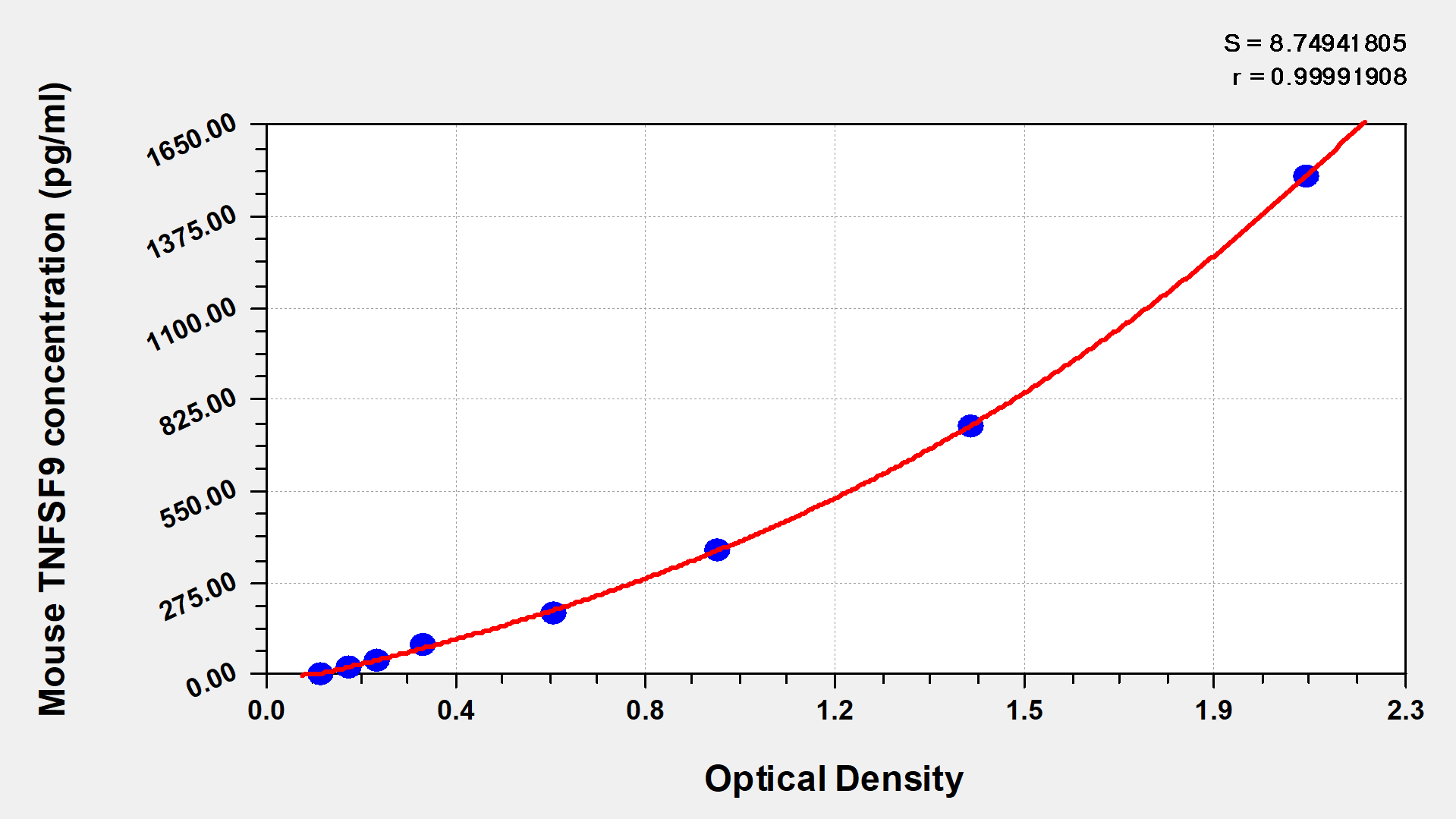
pg/ml
OD1
OD2
Average
Corrected
1500
2.049
2.134
2.091
1.968
750
1.452
1.389
1.420
1.297
375
0.900
0.928
0.914
0.790
187.5
0.571
0.609
0.590
0.466
94
0.330
0.321
0.326
0.202
47
0.231
0.243
0.237
0.113
23.5
0.178
0.184
0.181
0.058
0
0.122
0.125
0.124
-
数据处理:
-
货期:3-5 working days
相关产品
相关问答
Can you please provide the following information about this kit:
a. Capture antibody or capture antigen – immunogen type, sequence (including species source and accession no. if available), expression host, clonality and host species.
b. Detection antibody (if applicable) - immunogen type, sequence (including species source and accession no. if available), expression host, clonality and host species.
c. Standard – if recombinant protein please specify sequence (including species source and accession no. if available) and expression host.
CSB-EL023997MO
This kit is designed against extracellular domain. Pls refer to: https://www.uniprot.org/uniprot/P41274.
Capture antibody is goat polyclonal antibody and detection antibody is goat polyclonal antibody.
Immunogen is 293 cell-derived recombinant protein.
Standard is 293 cell-derived recombinant protein.
“Regarding the cncentration of sulfuric acid in this MSDS.
Is 4N sulfuric acid 2mol/l?
What is the meaning of □ of 1□ x 10ml?”
The volume of sulfuric acid in the 96T kit is 10mL.
Per customers request, please provide the following information regarding Mouse Tumor necrosis factor ligand superfamily member 9, TNFSF9 ELISA Kit (CSB-EL023997MO)
1)The active ingredient of the stop solution and its concentration ?
2)The type, concentration, and state (liquid/lyophilized) of the preservatives used ?
3) If the components are lyophilized, what is the concentration prior to reconstitution (i.e. mass of preservative used/ total mass of lyophilized vial contents)?
4)Expression host of the standards ?
5)Which components have H202 with the concentration of H202 in each, if any?
6) Are there any components that contain hydrogen peroxide & Urea hydrogen peroxide (Carbamide peroxide) in any of the components in this kit?
7) If yes, which components contain hydrogen peroxide & Urea hydrogen peroxide (Carbamide peroxide) and the concentration?
CSB-EL023997MO
Standard:293 cell-derived recombinant protein(The preservatives in the standard is liquid proclin 300(1:3000)).
The standard is lyophilized, and the concentration after reconstitution is 1500pg/mL.
Stop solution is 4N sulfuric acid. ( There is no preservatives in it.)
This kit doesn't contain H202(hydrogen peroxide) & Urea hydrogen peroxide (Carbamide peroxide).
Pls let me know if you have any further questions. Thank you.
靶点详情
-
功能:Cytokine that binds to TNFRSF9. Induces the proliferation of activated peripheral blood T-cells. May have a role in activation-induced cell death (AICD). May play a role in cognate interactions between T-cells and B-cells/macrophages.
-
基因功能参考文献:
- this study shows that intrinsic 4-1BB signals are indispensable for the establishment of an influenza-specific tissue-resident memory CD8 T-cell population in the lung PMID: 28051085
- 4-1BBL can restrain effector T cell development, creating a more favorable regulatory T cell to effector cell balance under tolerogenic conditions, and this may be particularly active in mucosal barrier tissues PMID: 25404362
- These results demonstrate that 4-1BBL-engineered DCs can improve CIKs cytotoxicity against prostate cancer cells. PMID: 25572476
- Data indicate that CD137L deficient mice displayed a variety of immunological dysfunctions. PMID: 24091276
- CD137-expressing CD4+ T cells in the bone marrow engage CD137L on hematopoietic progenitor cells, and this CD137L signaling biases hematopoiesis towards myelopoiesis during aging. PMID: 23945137
- Results suggest that CD137L reverse signaling exerts a pro-apoptotic effect by suppressing integrin-mediated survival signals in neural stem cells. PMID: 23925549
- A VCAM-1-positive stromal cell is a plausible candidate for the radioresistant cell that provides 4-1BB ligand to sustain memory CD8-positive T cells. PMID: 22886791
- The CD137L induces tyrosine phosphorylation as well as the up-regulation of M-CSF, IL-1beta and TN-C expressions by knockdown of TMEM126A. PMID: 22885069
- 4-1BB signaling negatively modulate Treg cells by two distinct mechanisms: i) inhibiting the conversion of CD4(+)FoxP3(-) T cells into iTreg cells and ii) endowing Teff cells refractory to inhibition by Treg cells. PMID: 22870329
- The CD137L reverse signaling pathway in epithelial cells may represent a good target for blocking the initial stage of inflammatory diseases, including renal ischemia-reperfusion injury. PMID: 22160719
- Reverse signals initiated by CD137L negatively modulate certain immune functions of thioglycollate-elicited peritoneal macrophages PMID: 21184130
- Mice inoculated with H22 tumor cells expressing B7-1, B7-2 and 4-1BBL developed a strong cytotoxic T lymphocyte response and long-term immunity against wild-type tumor, suggesting a synergistic effect between the B7 and 4-1BBL costimulatory pathways PMID: 20563597
- Cocultures of Natural killer (NK) cells with CD137L transfectants confirmed that human CD137 inhibits NK-cell reactivity, while activating signals were transduced by its counterpart on NK cells in mice. PMID: 20008791
- A role for 4-1BB ligand in dendritic cell activation PMID: 11867564
- In a murine model, herpetic stromal keratitis is inhibited by blockade of 4-1BBL/4-1BB interactions with monoclonal antibodies to 4-1BBL or by deletion of 4-1BB. PMID: 12847221
- involvement of 4-1BB in CD4(+) Th1 cell responses by regulating the clonal expansion and survival of CD4(+) T cells as seen in CD8(+) T cells PMID: 14749528
- Characterization of the role of 4-1BBL in activation and recall response of CD4 T cells vs CD8 T cells. PMID: 14991604
- demonstrate that suppression of experimental autoimmune uveoretinitis results from antigen-driven, 4-1BB-mediated expansion of novel CD11c+CD8+ T cells that suppress antigen-specific CD4+ T cells via an indole 2,3-dioxygenase-dependent mechanism PMID: 16899371
- indicate that the CD28 costimulatory pathway plays a major role in the alloimmune response and that 4-1BB signals are dependent upon CD28 signals PMID: 17202836
- IL-13 was coinduced following 4-1BB triggering to maintain the Th1/2 balance of immune response. PMID: 17389581
- Thus, long-term inhibition of the 4-1BB pathway reduces cardiac damage, remodeling, and inflammation during viral myocarditis. PMID: 17468777
- CD137 ligand plays a role in allergic asthma. PMID: 17845419
- CD80 and 4-1BBL induce auto- and transcostimulation in tumor cells PMID: 18026115
- deliver new insights into the multiple effects of reverse signaling of CD137L in human DC during the initiation of an adaptive immune response PMID: 18395851
- IL12- and CD137L-transfected plasmocytoma cells prevented tumor growth and induced long-lasting immunity PMID: 18610746
- Reverse CD137 ligand signaling takes place in hematopoietic progenitor cells, where it induces proliferation and differentiation toward monocytes and macrophages. PMID: 18768847
- modification of cancer cells with 4-1BBL gene can produce anti-tumor immune responses. PMID: 18954562
- During mild respiratory influenza infection in which virus is rapidly cleared, costimulatory receptor 4-1BB is transiently induced on lung T cells and 4-1BB ligand (4-1BBL) is completely dispensable for the initial CD8 T cell response and mouse survival. PMID: 19124736
- 41BBL requires hexamerization for activation PMID: 19596991
- CD137L ordinarily regulates the GC B-cell response and thereby acts as a tumor suppressor. PMID: 19608748
- These findings demonstrate that reverse signals evoked by CD137L regulate immune functions in macrophages. PMID: 19676073
- 4-1BB ligand induces cell division, sustains survival, and enhances effector functions of CD4 and CD8 T cells under comparable conditions of antigenic stimulation. PMID: 11466348
显示更多
收起更多
-
亚细胞定位:Membrane; Single-pass type II membrane protein.
-
蛋白家族:Tumor necrosis factor family
-
数据库链接:
Most popular with customers
-
Human Transforming Growth factor β1,TGF-β1 ELISA kit
Detect Range: 23.5 pg/ml-1500 pg/ml
Sensitivity: 5.8 pg/ml
-
-
-
Mouse Tumor necrosis factor α,TNF-α ELISA Kit
Detect Range: 7.8 pg/ml-500 pg/ml
Sensitivity: 1.95 pg/ml
-
-
-
-




